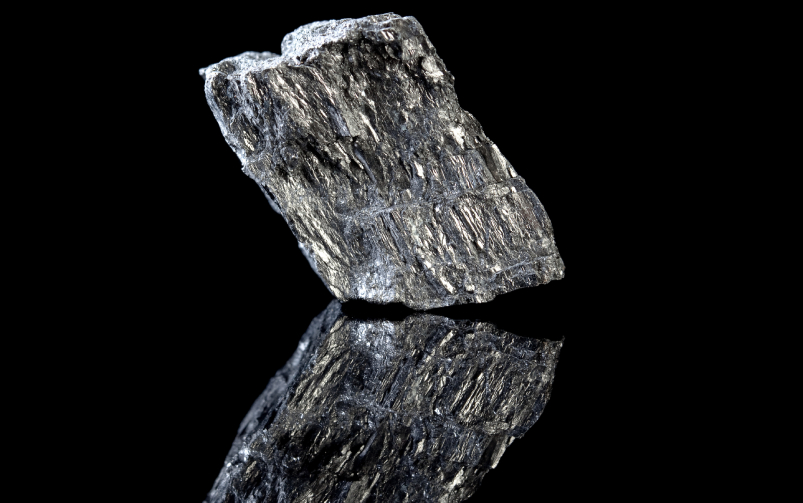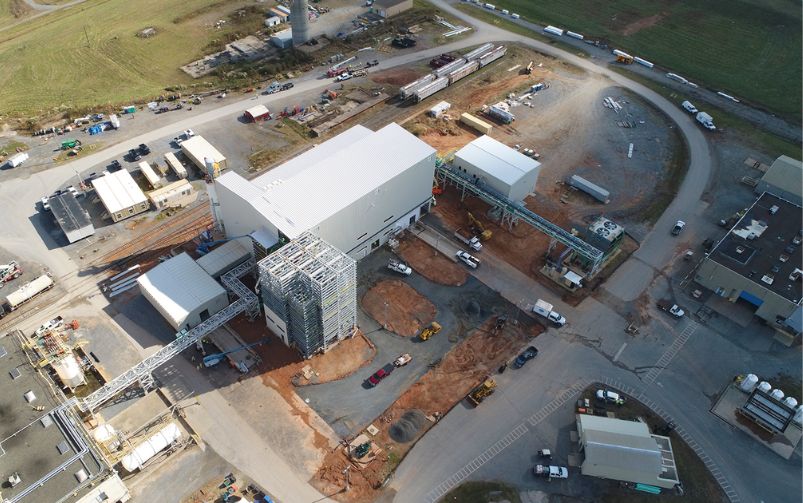The Copper Mountain open-pit mine is located about 20 km south of Princeton, British Columbia and 300 km east of the port of Vancouver. Courtesy of Copper Mountain Mining.
Newmont Corp.’s US$19.2 billion acquisition of Australian miner Newcrest Mining Ltd. closed out a busy month of mining deal activity as miners jockey for scale and access to copper supply in preparation for skyrocketing demand for the metal.
The deal was unanimously approved by Newcrest’s board on May 14 and made headlines for cementing Newmont’s place as the world’s largest gold producer. The acquisition, which is still subject to a shareholder vote and regulatory approval, would also give the post-merger Newmont access to a long-term copper pipeline, boosting the combined company’s annual copper production to more than 158,000 tonnes.
“This transaction . . . increases Newmont’s annual copper production—a metal vital for the new energy economy—and adds nearly 50 billion pounds of copper reserves and resources from Newcrest to our balanced and robust portfolio,” Newmont chief executive officer Tom Palmer said in a May 14 press release. “We intend to quickly realize these opportunities to create superior value for our shareholders, workforce, host communities and governments.”
The deal follows Hudbay Minerals’ all-share US$439 million friendly acquisition of Copper Mountain Mining Corp. in mid-April and Glencore Plc.’s attempts to acquire Teck Resources for US$22.5 billion in an all-share deal and immediately create two separate companies, one dedicated to base metals and one focused on thermal and metallurgical coal and carbon steel materials. Teck, which rebuffed two bids from Glencore in April for exposing its shareholders to thermal coal and what it described as jurisdictional risks, has also been approached by more than six mining companies, including Vale, Anglo American and Freeport-McMoRan, about acquiring its base metals business if its own proposal to spin off its coal assets goes through, according to Reuters. Teck withdrew its initial proposal to split the company hours before a key shareholder vote on April 26, but plans to pursue a “simpler and more direct separation,” as stated by Teck CEO Jonathan Price in an April 26 press release.
BHP also completed its US$6.4 billion acquisition of Australian base metals miner OZ Minerals on May 2, which gives BHP control of the Carrapateena copper mine close to its Olympic Dam operation in South Australia.
Hudbay’s purchase of Copper Mountain will create Canada’s third-largest copper producer, with an annual production of 150,000 tonnes of copper. In an interview with CIM Magazine, Hudbay CEO Peter Kukielski said the deal will give the combined company scale and resiliency in advance of a period of planned growth—including the future development of Hudbay’s Copper World project in Arizona, the expansion of Copper Mountain to the New Ingerbelle deposit and exploration of potential high-grade opportunities at the B.C. mine—and exposure to a broader investor pool, which should boost its valuation. Kukielski said it will also accelerate the company’s plan to reduce debt ahead of future growth initiatives.
Kukielski said the similarities between Hudbay’s Constancia mine in Peru and the Copper Mountain mine could unlock US$20 million in annual operational efficiencies. The company plans to apply Constancia’s operating framework at Copper Mountain and bring idled trucks back into operation to move more material, accelerate stripping, modify the crushing circuit and over time improve the mill’s throughput.
For Copper Mountain, the acquisition wiped away its single-asset risk. The deal came after a challenging year for the company, which saw its annual production nearly halved to just under 24,000 tonnes of copper in 2022, from 41,000 in 2021, owing to milling issues, encountering oxidized ore in the mine’s north pit, a ransomware attack in late December and plant optimization projects throughout the year.
“In 2022 there were a series of events that really hammered us and impacted our ability to do what we wanted to do, and we got heavily punished for it,” Copper Mountain CEO Gil Clausen told CIM Magazine. “When you’re building a big project concurrent to something like that and you have those capital demands of growth and expansion, it’s very hard to do that from a single-asset base. It introduces so much risk that it’s hard to raise the type of capital you need to do larger projects.”
The outlook
John Turner, a partner at Fasken Martineau DuMoulin, told CIM Magazine it is an opportune time for companies to make deals: with markets in turmoil, China’s post-pandemic growth coming in slower than expected and major copper projects coming online that are helping to balance supply and demand in the short term, there has been a ceiling on the market price of copper miners.
“It’s still possible to do deals, and juniors and intermediates are rating at half what they were a few years ago,” said Turner, who leads the firm’s global mining group and is chair of its capital markets and mergers and acquisitions group. “There’s a pretty big opportunity there.”
Analysts have been predicting an increase in mergers and acquisition (M&A) activity as cashed up miners look to pivot their portfolios towards metals key to the energy transition.
In September 2022, fresh off BHP’s first overture to OZ and Rio Tinto’s acquisition of Oyu Tolgoi owner Turquoise Hill Resources, four Scotiabank analysts said in a note to clients the industry was at the beginning of a copper-focused M&A cycle. Companies, flush with cash thanks to higher commodity prices and “disciplined growth spending,” are facing limited opportunities to expand existing assets and longer timelines for large-scale greenfield project development and construction.
“Most of the larger miners appear to have fairly limited internal growth opportunities in ESG-friendly commodities, particularly in copper, which suggests that M&A will likely be a part of the solution,” the analysts wrote, noting that while a handful of large-scale copper projects were nearing completion at the time of writing, no major greenfield projects had been approved globally for development since 2020.
Copper demand is set to experience a significant boom in the coming decade thanks to the metal’s importance to the green energy transition. Most of the demand is expected to come from electric vehicles, which require roughly 2.5 times the amount of copper as traditional internal combustion engine vehicles. Panos Kotseras, head of base metals demand and markets at CRU Group, said in an email to CIM Magazine that renewable energy, including wind and solar power, are “fast-growing copper applications.”
Kotseras said the firm’s base-case forecast sees refined copper consumption in electric vehicles tripling by the mid-2030s. While Kotseras said new supply, including Teck’s QB2 mine in Chile and the commencement of underground mining at Rio Tinto’s Oyu Tolgoi mine in Mongolia, will keep copper markets relatively balanced in the next three to four years, “severe supply shortages are set to follow in the medium to long term.” CRU said by the early to mid-2030s, it estimates miners would have to spend roughly US$100 billion in collective capital expenditures to close the supply gap.




